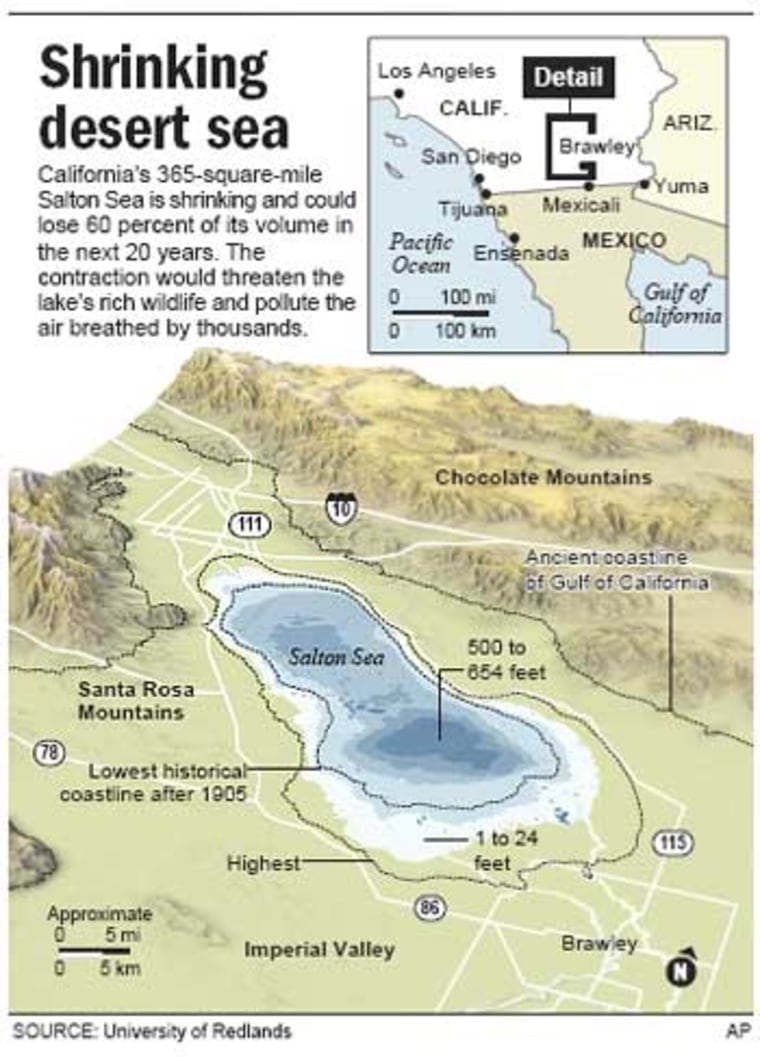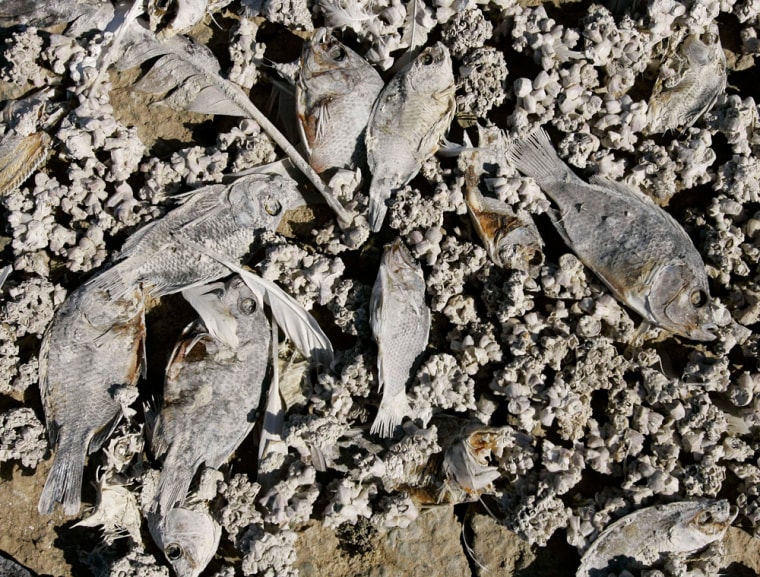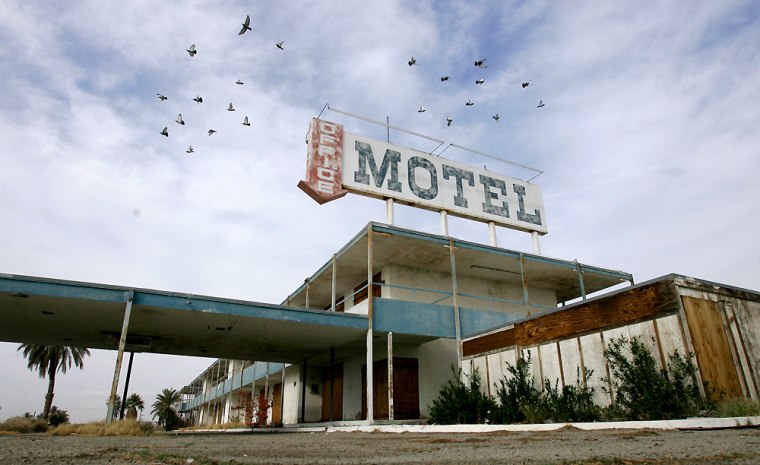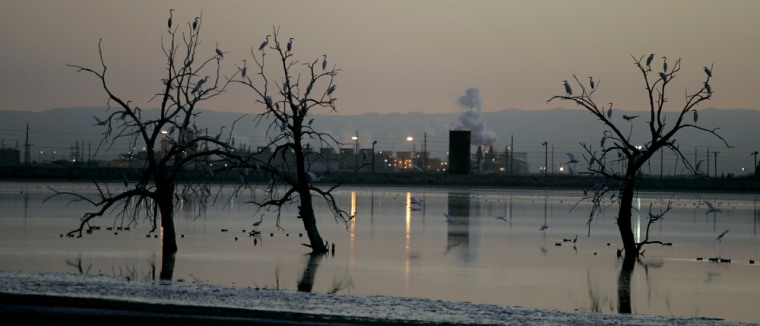The Salton Sea is an incongruous sight: a huge body of water in the middle of a desert.
And with good reason. California's largest lake was created purely by accident in 1905 when floodwaters from the Colorado River burst past a series of dams and settled in a naturally salty depression more than 228 feet below sea level.
Ever since, the lake has been a Southern California oasis, rich in wildlife.
Its future, however, is in doubt. The 365-square-mile sea is shrinking and, with plans to divert more of the water that feeds it, could lose 60 percent of its volume in the next 20 years, killing the fish and devastating the 400 species of migrating birds that feed on them. And as the lake contracts, more land will be exposed to fierce desert winds that can whip sand and foul the air breathed by thousands of people.
That is the backdrop as the state Water Resources Department reworks a draft plan calling for spending $6.9 billion over 75 years to save the Salton Sea. A final version will be submitted to the Legislature within the next two weeks.
Nearly two dozen proposals
Though there is consensus something should be done, it is unclear whether lawmakers will go along with an expensive fix. In fact, the problem has loomed for years, and nearly two dozen proposals to help have gone nowhere.
"If we dawdle around and don't go after this hard, we'll end up with a dead sea before we can fix it," warned Rick Daniels, executive director of the Salton Sea Authority, a coalition of local governments and agencies. "The fish will be dead and the birds will be gone."

Ringed by the mountains, the Salton Sea sits in California's Imperial Valley, about 40 miles from the Mexican border. In the summer, it is one of the hottest spots in the U.S., with temperatures often soaring past 100 degrees. The water is 25 percent saltier than the Pacific Ocean.
The lake has a stark beauty. On a still day, it glistens, reflecting the blue Southern California sky. But on some days it can be funky-smelling. Nutrients in agricultural runoff cause periodic algae blooms that suck oxygen from the water and kill hundreds of thousands of fish.
Stretching 35 miles long and up to 15 miles across, the lake is fed primarily by runoff from Colorado River irrigation canals. It has no outlet; a balance between evaporation and the water flowing in sustained it for decades.
'Verge of collapse'
But with more and more water being diverted from the Colorado River to satisfy the needs of the booming Southwest and cities such as San Diego, Los Angeles, Las Vegas and Phoenix, the balance could be upset.

"It's on the verge of collapse," said Doug Barnum, a U.S. Geological Survey chief scientist at the Salton Sea.
The lake is a critical stop along the Pacific Flyway, a route for more than 100,000 migratory birds. Among the approximately 50 endangered and sensitive species are the California brown pelican, Yuma clapper rail and mountain plover.
Chris Schoneman, a U.S. Fish and Wildlife Service project leader at the Sonny Bono Salton Sea National Wildlife Refuge, said people don't seem to realize the sea's significance.
"If a place like the San Francisco Bay area or the Great Salt Lake lost its wildlife? Man, it would be a huge natural disaster," he said. "Here, there's less concern about the Salton Sea as a natural resource."
It's not just wildlife that's threatened. An estimated 134 square miles of dusty lakebed — an area five times the size of Washington, D.C. — could be exposed to desert winds by 2036 if no action is taken. Imperial County already has the highest childhood asthma hospitalization rate in the state.
Barriers to corral the water
The draft plan calls for a smaller but more manageable Salton Sea, with the amount of water available for use by humans and wildlife reduced by 60 percent to about 147 square miles. Forty miles of barriers — built most likely out of boulders, gravel and stone columns — would be erected along with earthen berms to corral the water.

The plan also envisions a complex system of drip-tubes that would irrigate plants and keep the dirt from blowing away.
Officials say a combination of state and federal funds, along with local taxes, will pay for the restoration. Annual costs will start at $52 million and eventually rise to $125 million.
As for whether the Legislature will go along, Water Resources Secretary Mike Chrisman said: "It's going to be challenging at best."
Woody Rogers, a 57-year-old construction worker, and his wife, Frankie, have owned a home along the Salton Sea for 12 years. Their lakefront property would become desertfront under the plan. That is OK with them, provided the sea is saved.
But Rogers is skeptical, fearing "it's going to be one of those cases where we got involved and screwed it up."
